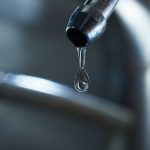Water wells are essential for many households, especially in areas without access to municipal water. The well pump is at the heart of these systems, a critical component for ensuring a steady water supply. Understanding the lifespan of a well pump is important for homeowners to maintain an efficient and functional water system. Knowing when to call in a professional service to replace your pump can end up saving you money and time while providing peace of mind.
Understanding the Lifespan of Well Pumps
The lifespan of a well pump varies based on several factors, but on average, it can last between 8 to 15 years. This range is influenced by the type of pump, the quality of installation, the level of maintenance it receives, and the usage demands placed on it. Understanding the factors that impact your pump’s lifespan can help in planning for scheduled maintenance and eventual replacement.
Signs That You Need Replacement
Several signs can indicate it’s time to replace your well pump:
Decreased Water Pressure: A noticeable drop in water pressure can be one of the first signs of a failing pump. This could manifest as a weaker flow in showers or faucets and can be caused by the pump’s inability to efficiently move water through the system.
Strange Noises: Unusual sounds like grinding, humming, or clanking from the pump are often indicative of mechanical problems. These noises can result from worn-out components, misalignment, or other mechanical issues within the pump.
Inconsistent Water Supply: If you experience erratic water flow or if the water supply suddenly stops, this could point to issues with the pump’s ability to maintain consistent water pressure. It might also signal problems with the pump’s electrical components or pressure tank.
Increased Energy Bills: A pump that’s struggling to maintain the necessary pressure can consume more electricity, leading to higher energy bills. This inefficiency often indicates that the pump is working harder than normal to maintain water flow, which can be due to aging or mechanical wear.
Dirty Water: The presence of murky, discolored, or contaminated water can signal a failing pump. This issue could arise from the pump stirring up sediment from the bottom of the well, or it could indicate a breach in the system allowing contaminants to enter.
Factors Influencing the Lifespan of Your Pump
Several factors can affect how long a well pump lasts.
Frequency of Use: The more frequently a pump is used, the faster its components can wear out. Continuous or heavy use, such as in larger households, can accelerate the degradation of the pump’s mechanical parts, reducing its overall lifespan.
Water Quality: The quality of water being pumped plays a significant role. Water with a high mineral content, often known as hard water, can cause scaling and buildup inside the pump and on its components, leading to increased strain and potential breakdowns.
Maintenance Practices: Regular maintenance helps extend your pump’s lifespan. This includes periodic inspections, cleaning, adjustments, and timely repairs. Well-maintained pumps are less likely to suffer from unexpected failures and generally operate more efficiently over time.

Regular Maintenance: Prolonging Your Well Pump’s Life
Regular maintenance is key to extending the lifespan of your pump.
Routine Inspections: Conducting regular inspections allows for the early detection of potential issues. These checks can identify signs of wear, corrosion, or mechanical problems before they escalate into major repairs. Regular assessments also ensure that the unit is operating under optimal conditions.
Cleaning and Adjustments: Regular cleaning prevents the buildup of sediments and debris that can hinder efficiency. Adjusting the pump’s settings and components for optimal performance can prevent strain on the system, thereby extending its lifespan.
Timely Repairs: Addressing repairs as soon as issues are detected is crucial. Small problems, if ignored, can develop into significant malfunctions. Prompt repairs not only save on costly future repairs but also maintain the unit’s efficiency and reliability.
The Replacement Process
Replacing a pump typically involves multiple steps.
Assessment: The first step is a professional evaluation of the existing pump. This assessment determines whether a replacement is necessary and identifies any underlying issues that may have contributed to the decline in performance.
Selection: Once replacement is deemed necessary, the next step is selecting the appropriate pump. This choice is based on several factors, including the well’s depth, the household’s water demand, and the water quality. Selecting the right unit ensures efficiency and longevity.
Installation: The final step is the professional installation of the new pump. This process involves not just fitting the unit but also ensuring it is properly integrated with the existing well system. Professional installation is key to guaranteeing optimal functionality and efficiency.
Experience Expert Well Services with A1 Well Drilling
Ensure the longevity and efficiency of your water system with expert well pump services from A1 Well Drilling. Don’t wait for a complete breakdown; contact us today for a professional assessment and experience the peace of mind of not trying to figure out ‘how long does a well pump last?’. Whether it’s routine maintenance, emergency repairs, or a complete replacement, A1 Well Drilling has the expertise to keep your water flowing smoothly. Contact us today and schedule your service now!
FAQ Section
What is the average lifespan of a well pump?
The average lifespan of a well pump typically ranges from 8 to 15 years. This duration is influenced by factors such as the type of pump, its usage frequency, maintenance quality, and the overall water quality it handles.
What are the signs that my well pump needs replacing?
Key signs include a noticeable decrease in water pressure, indicating the pump’s reduced efficiency; strange noises like grinding or humming, which suggest mechanical wear; inconsistent water supply, reflecting the pump’s failing capacity; and dirty or discolored water, often a sign of a deteriorating pump contaminating the water.
Can regular maintenance extend the life of my well pump?
Absolutely, regular maintenance plays a critical role in extending the lifespan of a well pump. This includes routine inspections, cleaning, adjustments, and timely repairs.
What factors affect a well pump’s lifespan?
Key factors include the frequency of use (more frequent use can lead to quicker wear and tear), water quality (water with high mineral content can accelerate deterioration), and maintenance practices (regular, high-quality maintenance can significantly prolong the pump’s life).
How often should I have my well pump inspected?
It is recommended to have your well pump inspected annually. Regular inspections can catch issues early, ensuring that the pump operates efficiently and preventing sudden failures.






